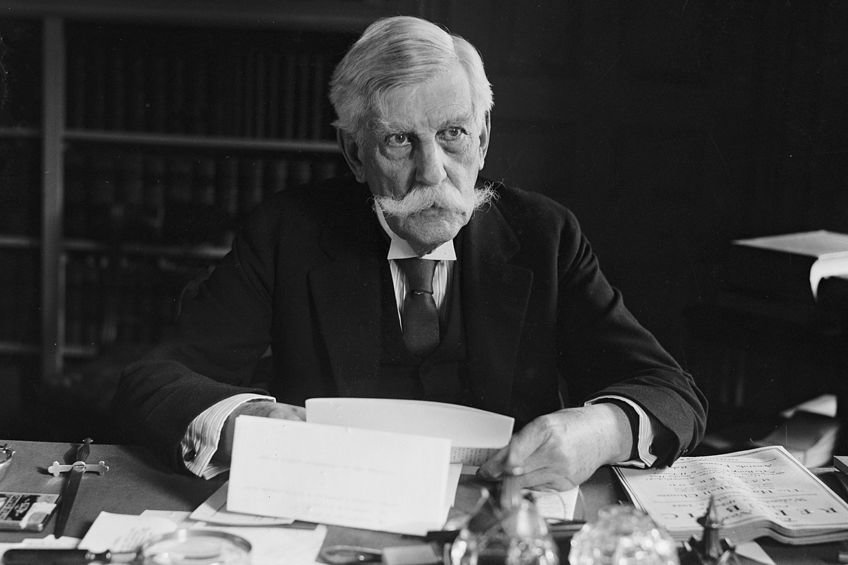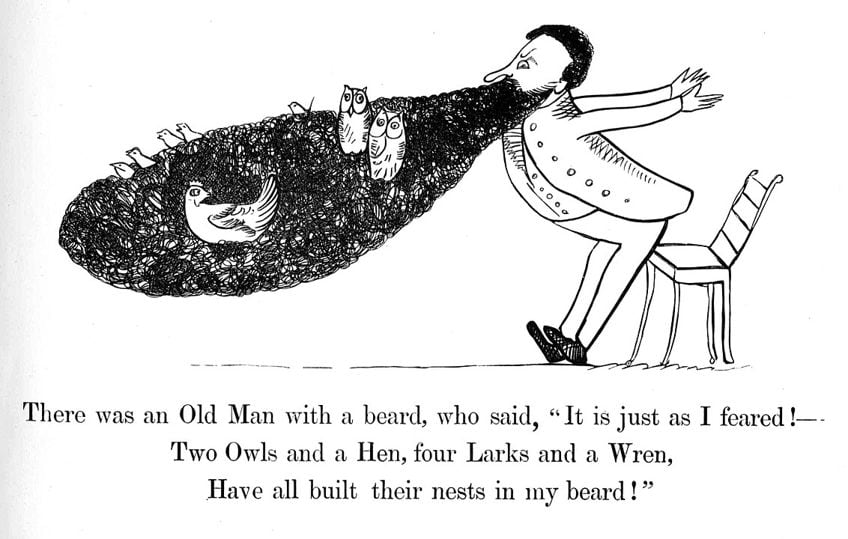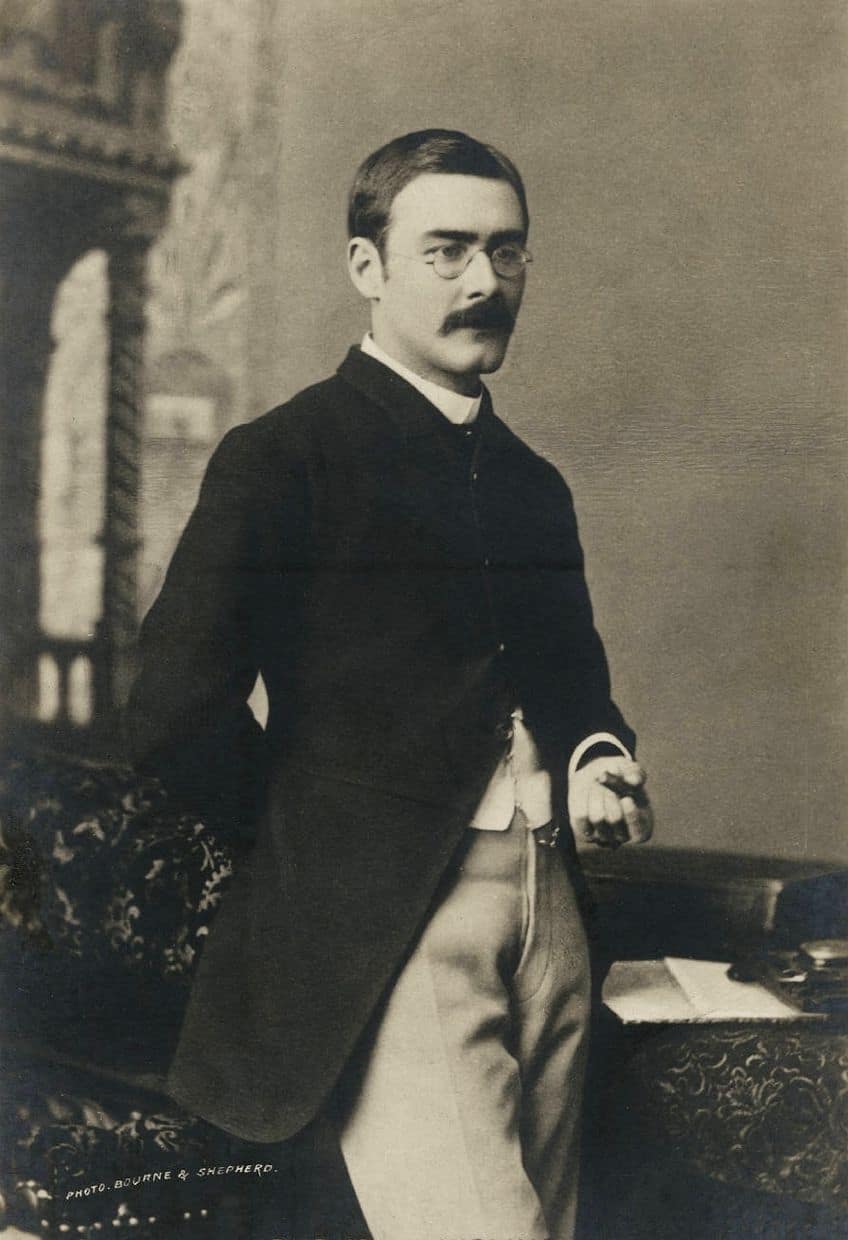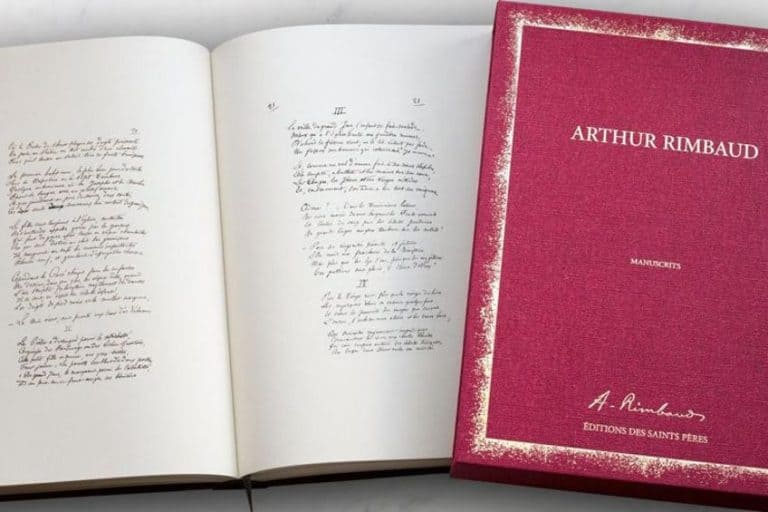Limerick in Poetry – A Look at Comedic Short-Verse Prose
Today, the purpose of this whole article is to basically answer one question for you: what is a limerick? This is definitely one of the better-known poetic varieties out there, but the question for us is why this appears to be the case. Why is it that the limerick has become such a well-known type of poetry when most of us could probably not name a single limerick off the top of our heads? So, we are going to have a look at what limericks are in the first place, some of their features and characteristics, the poets who have written them, and a number of different limerick examples to further explore this particular variety. The limerick is a fun form, so let’s not tally about it! We have limerick poems to discuss!
A Look at the Limerick in Poetry
Why is the limerick so popular when few could probably name a limerick poem or a poet associated with it? Probably because this form of poetry does not necessarily lend itself to being well-known on their own. Every limerick example, by its very nature, is a very short poem with a rather basic rhyme scheme, and they also often don’t even have titles. The reason that they generally don’t have titles is because of their length. Why name something so short? They are also often rather silly and humorous, and this does not lend the genre the kind of credibility that we associate (wrongly) with something like a sonnet. A limerick poem has every right to exist as a sonnet, but we still don’t see them, for the most part, as being on par with the so-called “serious” types of poetry. However, I’m going to give them the appropriate love today! So, let’s chat about limericks!

Summary of the Limerick in Poetry
The very first thing that we’re going to do today is to not even jump straight into limerick poems but to instead have a bit of a summary. These summarized points will, in very basic terms, answer our central question today: what is a limerick? However, a summary is still just a summary, but it should help with understanding the limerick in poetry:
- The limerick in poetry is a short form of poetry. By its very nature, the limerick in poetry is short. It has a line count of five. This means that a poem cannot be a limerick if it is any longer. There have been some poets who have made use of limericks as stanzas within a larger poem, but this is not what we generally think of as a “limerick poem” in the traditional sense.
- The limerick in poetry has a specific rhyme scheme. When it comes to this five-line poem structure, we have to also use a certain rhyme scheme. In terms of this poem’s structure, it makes use of an AABBA rhyme scheme. This allows it to make use of two pairs of rhyme followed by a reiteration of the first rhyme. It has a bouncy flow to it that keeps the structure entertaining.
- The limerick in poetry is often used for comedic verse. While a limerick poem could be about something serious, they usually aren’t. This particular poetic variety has come to be associated with humor. The form allows it to be short and punchy, and so the poets who have experimented with the form have generally taken that to mean that they can write some very goofy stuff with the limerick.
This summary may be just a summary, but there is use in summaries. Back in my old classroom, I used to hand out summaries to all of my students because it really does help, especially when prepping for an exam!
However, just looking at a summary is far from a good thing, and for that reason, we are going to now jump into a far lengthier discussion about the limerick in poetry.
A Definition of the Limerick in Poetry
In very basic terms, we can see the limerick in poetry as being a short style that only makes use of one stanza that is five lines long. In addition, the rhyme scheme of a limerick poem is set in stone as it is AABBA. This is a limerick at its most simplistic, but the form has never been complex in any real sense, but we should go into a little more depth about what each of those different aspects of the structure of the limerick means for it and the way that it has been used.

The Features of the Limerick in Poetry
We have already provided a brief explanation of the primary aspects of the limerick in poetry, but we should go a little more deeply into each of those very aspects to explain why they contribute to the limerick’s popularity. You see, the limerick is a rather popular form of poetry even though most people probably couldn’t name a single limerick example to save their lives. It’s easy to gesture in a vague direction of a limerick, but why does it actually use the structure that it uses?
Let’s start with that line length. It is made up of five lines. This makes it a particularly short poem.
Anything that is short will generally, by its very nature, be punchy. This is also why haiku are so popular. This also means that, like haiku, limericks often don’t have titles. They are too short to really incentivize the use of titles at all. This punchy nature also means that the limerick is absolutely perfect for humor and silliness.
The rhyme structure further contributes to this. The rhyme scheme is arranged as AABBA. This rhyme scheme is perfect for the short and punchy presentation of the limerick. It makes use of two rhyming couplets in a row and ends on a callback to the first couplet. By the time you reach the fifth line in the poem, you may not necessarily have the rhyme of the first two in your head any longer, and so that final line also serves as an ending off point that cuts the rhyme of the previous two lines off very suddenly. This adds a lot of extra punch.

This use of five lines, four of which use paired rhyme, means that the fifth lines is absolutely perfect for the use of a punchline. It’s a final BAM right at the end! Humor has always been integral to the development of the limerick, and many of these poems have either been for children or very much not for children. The jokey setup of the structure means that it does serve humor well, and humor is enjoyed by both kids and adults. However, the limericks favored by children are often silly and the adult ones tend to be a lot naughtier and very sexual or even flat-out gross.
The Common Uses of the Limerick in Poetry
It has already been mentioned but stands to be reiterated and expanded upon, that limericks are often jokes. They’re popular in children’s literature because they can be silly, short, and punchy, but this also means that they are absolutely perfect to be adapted into other joke forms. They can be quick and easy to produce, they make good use of rhyme and rhythm, and they can have highly variable meter.
Furthermore, because of the relative simplicity of their creation, they have become a favored form of amateur poets.
Their generally light-hearted nature means that they are unlikely to draw much critical response and can therefore be enjoyed as fun pieces of wordplay rather than high-minded poetry. And, of course, many poets can make an array of dirty jokes when they decide to adopt this format.
The Poets Who Have Produced Limerick Poems
The limerick has been around for a very long time. However, there are certain poets who have come to be more associated with the form than others. I have thrown a list of limerick examples in the section below, and those are from poets who are as diverse as Algernon Charles Swinburne and Rudyard Kipling. There have even been limericks written by poets such as T.S. Eliot. However, we are more likely to expect this form out of a poet like Lewis Carroll seeing as his work was in nonsense literature.

Speaking of nonsense literature though, the man most associated with the limerick is Edward Lear. This writer was both a poet and an illustrator and his Book of Nonsense (1846) was one of the great popularizers of the limerick format. These poets, who made strong use of humor in their limericks, would set the stage for the humor-infused normalcy of the limerick in literature, and it’s unlikely that this particular understanding of the form will go anywhere anytime soon.
However, before we get to the next section and have a look at a few limerick examples, where did the name come from and why? Well, the limerick is named after Limerick, which is a town in Ireland. It has come to be believed that the town’s various pubs saw the development of the limerick as a joke structure and that it then spread outside the city and into the hands of those who were mentioned above.
It should still be remembered that many nameless and anonymous joke poets laid the foundation for what would eventually come.
A Few Limerick Examples
When you want to learn about a topic, check out some examples of it. This was often my strategy as a teacher, and while the limerick is not very often taught at high school or beyond, it certainly is a famous and popular type of poetry. It is also fascinating that many limericks also lack titles. The limerick examples below have simply been named after their first lines, and this may also make them hard to find, but thanks to their very short length, you can probably find massive lists of them if you decide to go looking. Until then though, let’s just start with the five below.

There was a young lady of station (Between 1832 and 1898) by Lewis Carroll
| Date Published | Between 1832 and 1898 |
| Type of Poem | Limerick |
| Rhyme Scheme | AABBA |
| Meter | Variable |
| Topic | Absurd love |
There was a young lady of station is a rather absurd little limerick example, but that is the case with many limericks out there. In this case, the limerick tells us about a young lady, who is at the train station, and proclaims that she loves “man”, and men are happy to hear it, but she instead informs them that she was referring to the Isle of Man. It is a silly thing, but that is the case with many different limericks out there. The humor is often not very laugh out loud, but rather intended to put a small smile on your face.
In addition, this is a limerick by one of the most famous of all nonsense writers, and it may come as a surprise that he didn’t write more limericks in his life!

There was a young girl of Aberystwyth (Between 1837 and 1909) by Algernon Charles Swinburne
| Date Published | Between 1837 and 1909 |
| Type of Poem | Limerick |
| Rhyme Scheme | AABBA |
| Meter | Variable |
| Topic | Sex |
There was a young girl of Aberystwyth is a crude poem. When it comes to the limerick in poetry, as has been discussed, humor is very common, and if you were to just look up “dirty limericks” on Google, you’d find a whole host of sexualized limerick poems, but this is a much older one. This limerick example, which crassly concludes by saying that two people had sexual intercourse with one another by uniting certain organs, is especially crude because those “organs” are also described as the ones that we use to urinate.
The limerick has often been a way to be a bit gross or irreverent while sticking to a very formal type of verse.

God’s plan made a hopeful beginning (Between 1841 and 1935) by Oliver Wendell Holmes, Jr.
| Date Published | Between 1841 and 1935 |
| Type of Poem | Limerick |
| Rhyme Scheme | AABBA |
| Meter | Variable |
| Topic | God’s plan |
God’s plan made a hopeful beginning is a good instance of the limerick in poetry that is not necessarily all about being crude and crass. Instead, this limerick example has a far more serious message to convey. It states that God created us in a more hopeful sense, but that we have all just become sinners. It is not quite as irreverent as the limericks that have been discussed above, but it does go to show just what all can be done with the limerick.
This will be the last of the more serious limerick poems on this list though, because most of them are rather silly.

There was an Old Man with a beard (1846) by Edward Lear
| Date Published | 1846 |
| Type of Poem | Limerick |
| Rhyme Scheme | AABBA |
| Meter | Variable |
| Topic | Beards |
There was an Old Man with a beard is a limerick poem by one of the most famous writers of limericks. This poem, which is aimed at children, talks about the silly tale of an old man who has a beard that has come to be the home of many different birds. The poem is fun and entertaining and aimed squarely at a childhood audience. This is often where limericks go when they are produced because they are bouncy and entertaining, and they leave a smile on the face of every young child who reads one of them.
Limericks can, obviously, be about a lot more, but there’s a reason that Edward Lear is seen as a major popularizer of the limerick form.

There was a small boy of Quebec (1902) by Rudyard Kipling
| Date Published | 1902 |
| Type of Poem | Limerick |
| Rhyme Scheme | AABBA |
| Meter | Variable |
| Topic | Buried in snow |
There was a small boy of Quebec is the last of the limerick poems that we will explore today before we move on, and it is from one of the most famous colonial writers of the 20th century. The poem is about a young boy who is buried in snow, and so you would assume he’d be freezing cold, but he instead proclaims that this is not considered cold in Quebec. It is silly and humorous, and exactly the sort of comedic little thing that a child may enjoy. It’s hardly deep and meaningful but then again, which limerick is?

Ah, the limerick. This is one of the best-known types of poem even though most of us could never name a single limerick off the top of our head! Now, this does have at least something to do with the fact that limericks often lack names and that they are so short, but it does still make it rather fascinating that they are so well known. Either way, we have spent today giving the limerick in poetry some attention by discussing the form, some of its characteristics, the poets associated with it, and a handful of limerick examples. This overview is far from the most comprehensive thing ever written about the limerick, but it should be enough to show this form some love. So, get out there and find some limericks to enjoy! They explore all sorts of topics, but just be careful around them because many are very dirty (unless, of course, that’s exactly what you’re looking for).
Frequently Asked Questions
What Is a Limerick in Poetry?
The limerick is a form of poetry that makes use of a short line number, a single stanza, and a bouncy rhyme scheme. When it comes to limerick poems, we generally see them as humorous things aimed at either a childhood or juvenile audience. They are usually meant to be funny or irreverent, and so there are many child-friendly versions of limericks that are just silly and cute, and there are also many limerick poems that are very dirty. It can swing both ways very easily.
What Are the Characteristics of Limerick Poems?
The basic characteristics of the limerick are that they have five lines, an AABBA rhyme scheme, and often have a distinct meter. The form has come to be associated with humor because of its short length and punchy rhyme scheme. However, there can be more serious poems that make use of this structure. They are few and far between in comparison to the sillier ones though.
What Are Limerick Examples Predominantly Written For?
When we think of limerick poems, we often think of children. While there certainly are many very adult limerick poems, especially the myriad of immensely dirty ones that can be found all over the internet, the form of the limerick is often associated with humor and an attempt at being entertaining rather than necessarily being serious or trying to adopt any degree of poignancy. So, the limerick in poetry is often linked with children and comedy, and for very good reason!
What Are Some of the Most Famous Limerick Examples?
When it comes to limerick examples, we can easily point toward instances of the form such as There was a young lady of station (Between 1932 and 1898) by Lewis Carroll, There was an Old Man with a beard (1846) by Edward Lear, and There was a small boy of Quebec (1902) by Rudyard Kipling. However, these few limerick examples are only a few of them, and there are loads of other examples out there to choose from if you are so inclined.
Which Poets Are Best Known for Writing Limerick Poems?
There have been quite a number of poets who have written limericks, such as Lewis Carroll, Algernon Charles Swinburne, and Rudyard Kipling. However, while poets like this have written limericks over the years, they are not typically associated with the limerick. When it comes to a poet who was often directly associated with the proliferation and popularization of the limerick, we have to mention Edward Lear. This figure, and his 1846 collection of nonsense literature for children titled Book of Nonsense, was a leading factor in the development of the limerick.
Justin van Huyssteen is a freelance writer, novelist, and academic originally from Cape Town, South Africa. At present, he has a bachelor’s degree in English and literary theory and an honor’s degree in literary theory. He is currently working towards his master’s degree in literary theory with a focus on animal studies, critical theory, and semiotics within literature. As a novelist and freelancer, he often writes under the pen name L.C. Lupus.
Justin’s preferred literary movements include modern and postmodern literature with literary fiction and genre fiction like sci-fi, post-apocalyptic, and horror being of particular interest. His academia extends to his interest in prose and narratology. He enjoys analyzing a variety of mediums through a literary lens, such as graphic novels, film, and video games.
Justin is working for artincontext.org as an author and content writer since 2022. He is responsible for all blog posts about architecture, literature and poetry.
Learn more about Justin van Huyssteen and the Art in Context Team.
Cite this Article
Justin, van Huyssteen, “Limerick in Poetry – A Look at Comedic Short-Verse Prose.” Art in Context. February 12, 2024. URL: https://artincontext.org/limerick-in-poetry/
van Huyssteen, J. (2024, 12 February). Limerick in Poetry – A Look at Comedic Short-Verse Prose. Art in Context. https://artincontext.org/limerick-in-poetry/
van Huyssteen, Justin. “Limerick in Poetry – A Look at Comedic Short-Verse Prose.” Art in Context, February 12, 2024. https://artincontext.org/limerick-in-poetry/.








